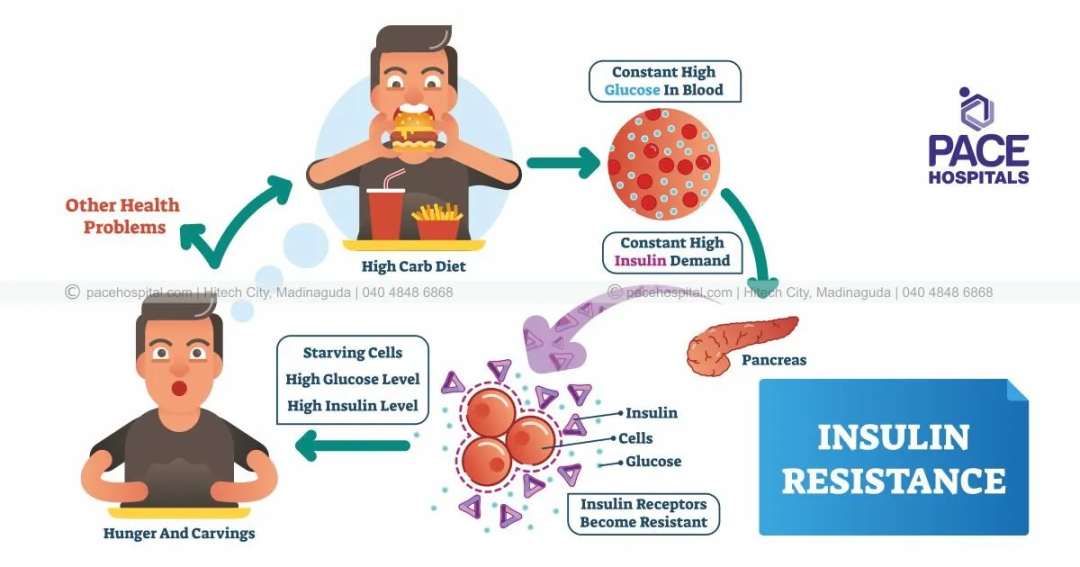Optimizing Health and Skin Through Diet: A Beginner’s Guide to Combating Insulin Resistance
Introduction
“Your skin is a window to your overall health.” For those following my blog “Sanmu Shu,” you’ve likely noticed my focus on topics like fat loss, inflammation reduction, and skincare over the past year. The key takeaway? Radiant skin isn’t just about skincare products—it’s a reflection of overall health. After diving into extensive research, one book stood out: Healing Through Diet and Fasting. Its core message is simple yet powerful: To improve health, skin, and mood, prioritize burning fat over sugar.
This guide breaks down the science behind insulin resistance, its impact on the body, and actionable steps to reverse it. Let’s start with the basics.
1. What Is Insulin Resistance?
Insulin resistance occurs when your cells stop responding effectively to insulin, a hormone that regulates blood sugar. Over time, this forces the pancreas to produce more insulin to compensate, creating a vicious cycle. According to Dr. Feng Xue from Fuwai Hospital, insulin resistance is the “central hub” of metabolic syndrome, which drives conditions like obesity, high blood pressure, and type 2 diabetes.
Why It Matters for Skin and Health
- Obesity and Inflammation: Excess visceral fat (belly fat) triggers systemic low-grade inflammation, worsening skin sensitivity and conditions like acne or eczema.
- Chronic Disease Risk: Untreated insulin resistance can progress to diabetes, cardiovascular issues, and even Alzheimer’s disease.
2. How Does Insulin Resistance Develop?
Modern lifestyles—stress, poor sleep, and sedentary habits—play a major role. Frequent consumption of refined carbs (e.g., white rice, sugary snacks) spikes blood sugar, demanding constant insulin release. Over time, cells become “numb” to insulin, requiring higher doses to function. This cycle leads to weight gain, fatigue, and metabolic dysfunction.
Key Contributors:
- Processed Foods: High in refined sugars and low in fiber, these foods cause rapid blood sugar spikes.
- Frequent Eating: Grazing throughout the day keeps insulin levels elevated, reducing the body’s ability to burn fat.
3. The Solution: Shift from Sugar to Fat Burning
The goal is to retrain your body to use fat as its primary fuel. Here’s how:

Step 1: Prioritize Satiety with Healthy Fats
- Why Fats? Healthy fats (e.g., olive oil, avocados, nuts) provide sustained energy and reduce cravings. Unlike carbs, they don’t trigger sharp insulin spikes.
- Examples: Replace white rice with avocado salads or sauté vegetables in olive oil.
Step 2: Extend Fasting Windows
- Intermittent Fasting: Limiting eating to an 8–10 hour window (e.g., 10 AM to 6 PM) allows insulin levels to drop, encouraging fat breakdown.
- Beginner Tip: Start by delaying breakfast by 1–2 hours and avoiding late-night snacks.
Step 3: Incorporate Fiber and Protein
- Fiber-Rich Carbs: Choose whole grains, legumes, and non-starchy vegetables to slow sugar absorption.
- Lean Proteins: Chicken, fish, and tofu stabilize blood sugar and support muscle health.
4. The Skin-Health Connection
Healthy skin starts internally. Omega-3 fatty acids (found in salmon, walnuts, and flaxseeds) reduce inflammation and protect against UV damage, while hydration from fiber-rich foods maintains skin elasticity.

Diet Tips for Glowing Skin:
- Omega-3 Sources: Fatty fish, chia seeds, spinach.
- Hydration Boosters: Cucumber, berries, and leafy greens.
5. A Practical Lifestyle Plan
Based on principles from Healing Through Diet and Fasting, here’s a balanced approach:
Daily Routine:
- Early Dinner: Finish meals by 7 PM and brush teeth afterward to avoid late-night snacking.
- Morning Movement: Walk briskly for 10–15 minutes daily (e.g., commute to work).
- Meal Sequencing: Start meals with vegetables drizzled with olive oil or vinegar to slow carb digestion.
- Smart Swaps: Replace refined grains with oatmeal topped with Greek yogurt and berries.
Foods to Embrace:
- Healthy Fats: Avocados, olive oil, nuts.
- Low-Glycemic Carbs: Quinoa, sweet potatoes, apples.
- Anti-Inflammatory Spices: Turmeric, ginger.
6. Exercise for Metabolic Health
Physical activity enhances insulin sensitivity. Aim for:

- 150 Minutes/Week: Brisk walking, cycling, or swimming.
- Strength Training: Build muscle to improve glucose uptake.
7. Avoiding Common Pitfalls
Steer clear of these common diet and lifestyle mistakes:
- Ultra-Processed Foods: Chips, sugary cereals, and pastries disrupt blood sugar balance.
- Hidden Sugars: Check labels for added sugars in sauces, dressings, and yogurts.
Conclusion
Reversing insulin resistance requires consistent, mindful choices. By focusing on whole foods, healthy fats, and strategic fasting, you can stabilize blood sugar, reduce inflammation, and enhance both health and skin vitality. Remember: Progress is gradual. As the saying goes, “Slow and steady wins the race.”
For deeper insights, consider reading Healing Through Diet and Fasting to explore advanced strategies. Here’s to your health, happiness, and radiant skin!
References
For a comprehensive list of scientific studies and sources cited in this article, please refer to the original blog post on “Sanmu Shu” and the book Healing Through Diet and Fasting.
